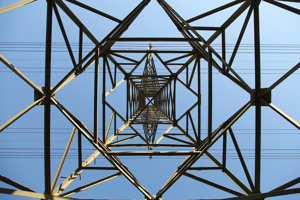Obtaining documents in the US for proceedings in the UK
In the recent, widely reported case of KBR, Inc, R (on the application of) v Director of the Serious Fraud Office [2021] UKSC 2, the Supreme Court limited the extraterritorial effects of the Serious Fraud Office’s (SFO) powers. The SFO did not have the statutory power to compel a US company to produce documents held by in the US. The SFO subsequently announced that it would no longer be investigating KBR’s UK subsidiaries, their employees or their agents for alleged bribery offences.
While the decision was concerned with the scope of an investigatory authority’s powers, it may have given litigants in the English courts pause for thought as to what avenues exist to obtain documents from third parties located in the US, whether that is for the purpose of fraud or other proceedings. This article examines three potential routes.
Hague Convention on Taking of Evidence
The Hague Convention of 18 March 1970 on the Taking of Evidence Abroad in Civil or Commercial Matters has both the UK and US as signatories. It is a well-established method for the provision of documents between one country where evidence is sought for use in proceedings and the other country where evidence is located.
A party in English proceedings may apply to the English court to issue a letter of request to the designated central authority in the US. This process of central authority transmission is not a straightforward procedure and can be beset with delays.
In England, an application must first be made to a Master in the High Court and then to the Senior Master at the Foreign Process Section, following which, if it is signed off, the letter of request will be passed to the Foreign & Commonwealth Office for onward transmission. On receipt, the US presently states on the Hague Convention website that the average time for execution of a letter of request is two to three months for evidence obtained on a voluntary
basis, while for evidence that needs to be compelled, the average time for execution is three to six months.
For these reasons, it is unlikely to be an option used extensively in practice, particularly where other, more direct routes for obtaining evidence may be available – and just such routes exist in the US.
1782 applications
Where evidence is sought from a person who is within the jurisdiction of a US district court, section 1782 of title 28 of the US Code may be utilised.
The section is cast in wide terms, providing that: “The district court of the district in which a person resides or is found may order him… to produce a document or other thing for use in a proceeding in a foreign or international tribunal including criminal investigations conducted before formal accusations.”
The request can be made by the English court (using the letter of request route) or “upon the application of any interested person”, which allows the English party – via local counsel – to make a direct application to the relevant
US court. In South Carolina Insurance Co v Assurantie Maatschappij “de Zeven Provincien” NV [1986] 3 All ER 487 (HL), the House of Lords confirmed that either mode could be used by a party in English proceedings.
Compared with the Hague Convention route, a direct application will almost certainly be faster given that it does not depend on transmission through diplomatic channels. The scope for possible challenges is reduced as well: whereas a letter of request is susceptible to challenge by both the requesting and receiving courts, a 1782 application is a matter only for the relevant US court and the English court will be slow to interfere.
The Commercial Court’s decision in Dreymoor Fertilisers Overseas Pte Ltd v Eurochem Trading GmbH and another [2018] EWHC 2267 (Comm) underlines the point. There, the court refused an application to continue an injunction preventing enforcement of a section 1782 order requiring a company director resident in the US to disclose documents and provide deposition evidence for foreign court proceedings (in the BVI and in Cyprus). It held that the court did not have a legitimate interest in policing an attempt to obtain documents for use in foreign proceedings, and that it would be a serious breach of comity for the English court to say the US court’s conclusions regarding the section 1782 order were wrong and to restrain enforcement.
A 1782 application can therefore be a potentially very powerful tool for a litigant in England seeking discovery of documents in the US. The application will be determined in accordance with US discovery procedures, which are recognised to be very broad, and the US courts have ruled that there is no requirement to demonstrate admissibility or discoverability of the evidence under the rules of the state where the evidence is sought to be issued.
This is tempered by the wide discretion available to the US district courts who can, for example, refuse an application that would be unduly burdensome to comply with. Meanwhile, the application will depend on the “target” in fact being located in the relevant district and there has been division between the circuits over the section’s applicability to private arbitration proceedings, with the US Supreme Court expected to rule on the matter later this year.
Chapter 15 discovery
A further and potentially more powerful tool still is available to English litigants, albeit to a narrower class. This can be found in the provisions of the United States Bankruptcy Code, 11 USC (Chapter 15). Even though it was enacted in 2005, Chapter 15 remains a relatively new and underutilised tool for parties seeking discovery of documents located in the US.
Unlike 1782 applications, Chapter 15 is a process only available to foreign insolvency practitioners, whereby they can file a petition in a US bankruptcy court, seeking recognition of the foreign insolvency proceedings.
Once the bankruptcy court has recognised the foreign proceedings, the court may grant ‘any appropriate relief’ to protect the debtor’s assets or creditor’s interests, including providing for the taking of evidence or the delivery of information concerning the debtor’s assets, affairs, rights, obligations or liabilities. This is a broad power – much wider than 1782 – and the concept can be looked on as enabling an insolvency practitioner/office-holder to harvest wide-ranging evidence within the US Court’s jurisdiction (even where responsive evidence may be stored outside the US) to equip investigation into the distressed estate’s affairs.
Indeed, there is authority for stating that Chapter 15 recognition can be sought for the sole purpose of utilising the extensive evidence gathering powers. Further, it is no bar if the US target has previously provided disclosure, nor does the requesting party have to establish that it has sought disclosure from alternative sources before utilising Chapter 15.
It should be noted that the discovery powers under Chapter 15 are not entirely unchecked. For example, relief will only be granted if the interests of creditors and other interested entities are sufficiently protected – that is, it requires a balance between the relief sought by the insolvency practitioner and the interests of other persons who may be affected by that relief. And there is a public policy exception which provides that a court may refuse to take action – including recognition of foreign proceedings – if that action would be manifestly contrary to the public policy of the United States. However, the words ‘manifestly contrary’ set a high threshold and would likely only be invoked in limited circumstances.
This article was first published in the ThoughtLeaders4 FIRE Magazine








































